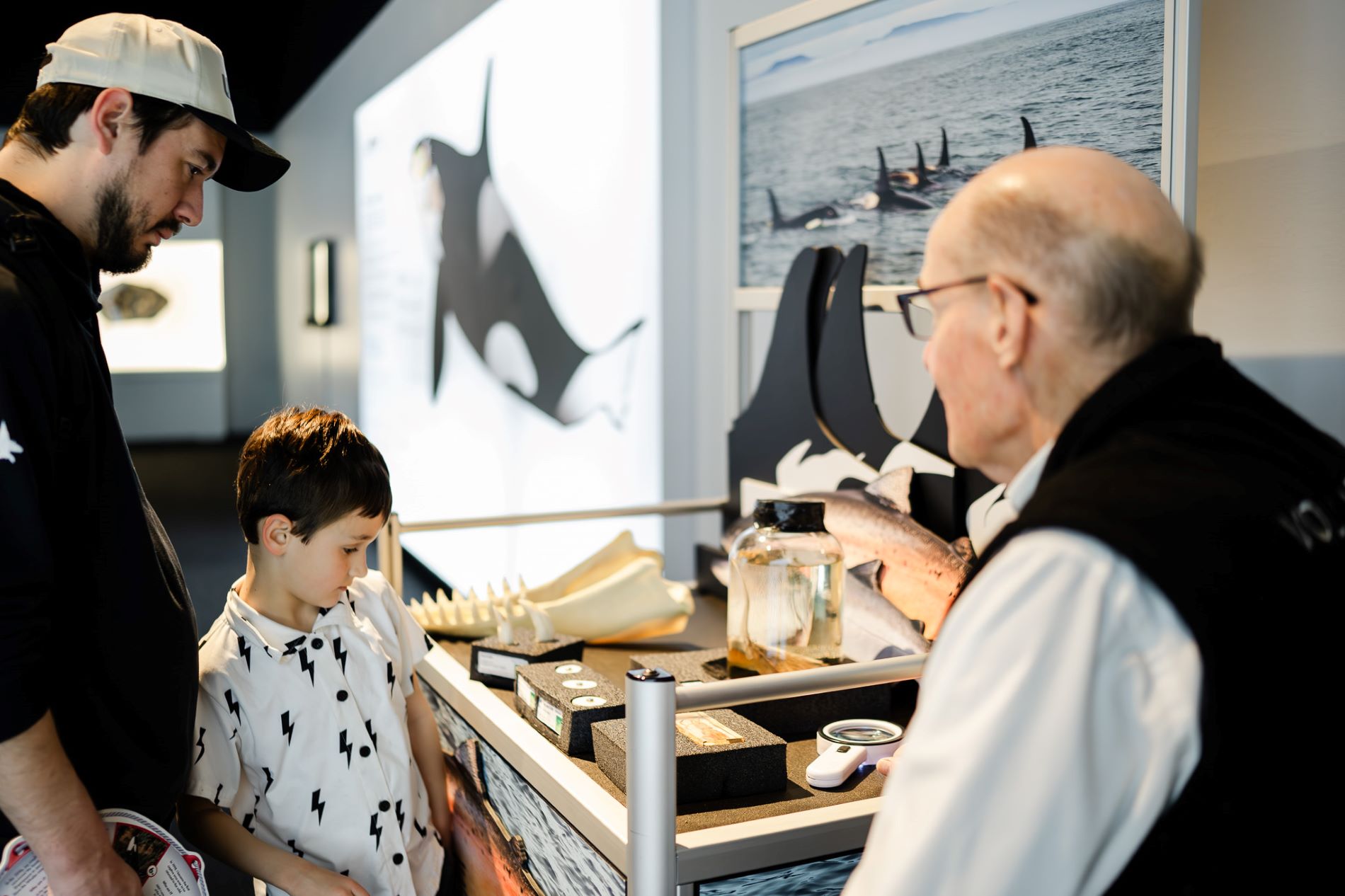
From their striking black-and-white coloring to their remarkable intelligence and family bonds, orcas have captivated humans for centuries. The former temporary exhibition at the Denver Museum of Nature & Science “Orcas: Our Shared Future” traced our evolving beliefs about these fascinating marine mammals, from fear to admiration and awe, helping us to discover their stunning intelligence and complex social structures.
"Orcas: Our Share Future" is no longer at the Museum.
Become a Museum member, here.

Educators discuss orcas with visitors at the Denver Museum of Nature & Science. (Photo/ Mio Sison III)
Here are a few fun facts about Orcas:
When you visited, here are just a few of the most mind-blowing facts about the world's largest dolphin species that made you you see these marine marvels in a whole new light:
- Orcas live long lives. Males live for around 30 years, while female orcas can live 90 years or more; one of only five animal species who live beyond their reproductive years!
- Orcas live in tightknit matriarchal groups called pods. A female orca is the leader, making important decisions like the direction they’re traveling and communicating messages to all members of the pod.

Touchable orca brain replicas were on display at the Denver Museum of Nature & Science. (Photo/ Mio Sison III)
- Orcas have complex languages and communicate with each other using sounds like clicks and whistles. They also use echolocation, which means they make a sound and listen for the echo, to hunt their prey.
- Orcas live in all oceans around the world. Each community of orcas has a unique culture and lifestyle. Everything from what they like to eat and how they hunt to the way they communicate with each other is different from group to group.
- Orcas are apex predators and have different hunting strategies for different types of prey. For example, orcas swim synchronously to create waves and knock prey off ice sheets for easy access, beach themselves to hunt seals on the shore and eat sting rays from a precise angle to avoid their dangerous barbs.

“Orcas: Our Shared Future” traces our evolving beliefs about these fascinating marine mammals, from fear to admiration and awe. (Photo/ Mio Sison III)
- Orcas are very intelligent. Neuroscientist Paul Spong once tested a captive orca named Skana on an activity she had completed correctly many times. When she gave the wrong answer more than 80 times, he realized HE was the one being tested!
- Orcas can be individually identified by the shape of their dorsal fins and by the markings on their backs known as saddle patches.
